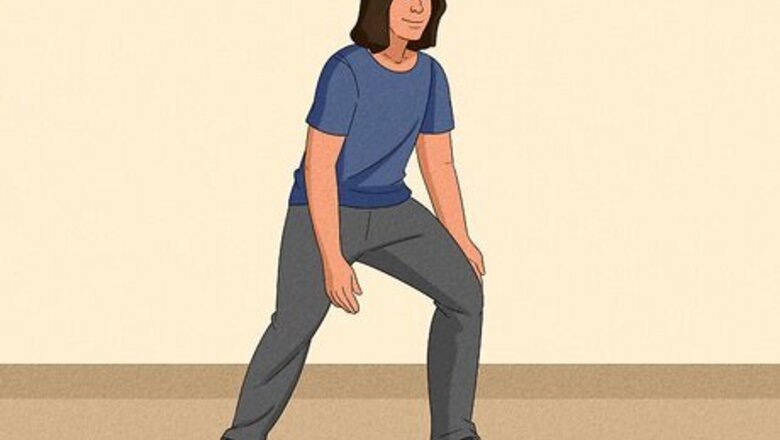
views
Basic Headbanging Technique
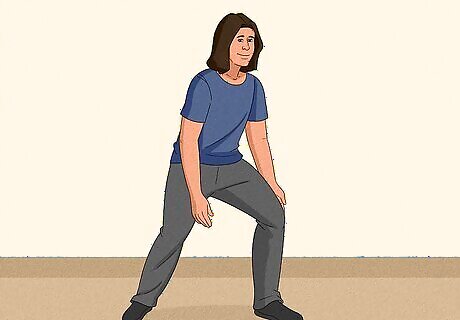
Stand comfortably with your knees slightly bent. Set your feet a little wider than shoulder-width apart, with one slightly in front of the other. Lower your center of gravity by bending your knees. This stance helps you keep your balance and absorbs some of the force created by flinging your body around like an electrified metalcore beast. For maximum composure, stay poised on the balls of your feet. A solid foundation also helps you stand your ground in an out-of-control pit.
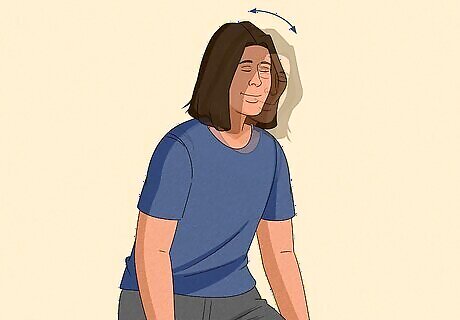
Start with a slow, rhythmic nod. As the band launches into their first number, straighten your neck and stick out your chin and chest. Nod with your whole upper body, finishing the arc by nodding your head slightly forward, then bringing it backward as you come up like you’re turning a handle with your chin. This is the “warm up” phase of the show, so start slowly. The real headbanging will begin a few songs into the set once everybody cuts loose. Try to let the tempo guide you as much as possible. If the music is too fast, try nodding to every second beat. Headbanging can strain your neck or cause whiplash if you’re not careful, so consider stretching your neck before the show, drinking lots of water, and avoiding alcohol.
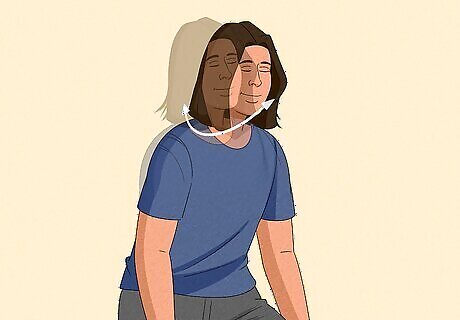
Bring your head back up by arcing it slightly at the bottom. Imagine that you're drawing a “J” at the bottom of each headbang. Most strains, pulls, cricks, jars, and rattles occur when metalheads reverse direction too quickly. By moving in an arc, you make the whole motion more fluid so your brain doesn't ricochet around inside your skull. Pick a direction for the “upswing” and keep it consistent. Switch up your technique every now and then to avoid putting undue stress on the same parts of your neck.
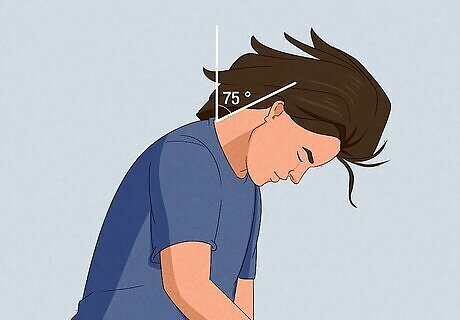
Slam hard to the heavy riffs. During the song's main guitar line or chorus, start swinging your head down towards your knees. Lean all the way down to about waist height before coming back up. To prevent injury, bend your neck at a 75º angle, max. It may help to headbang along to the bass line if the drum beat is too fast to keep up with. As the tempo of the songs gets faster, swing your head at a shallower and shallower angle. The threshold for neck injuries at 180 BPM is a 45º angle. Watch out for the person in front of you to avoid knockin' noggins while you're getting radical.
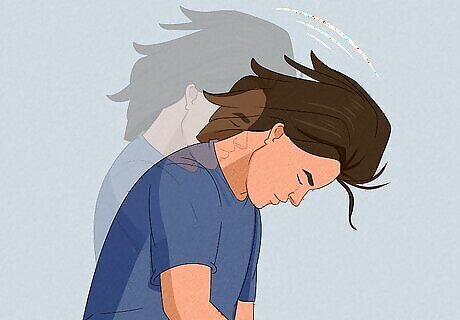
Speed up to match the tempo of a breakdown. When the band unleashes a particularly savage solo, bend over at the waist and rapidly shake your head up and down. This technique is sometimes called the “whiplash.” The key here is to use small movements so you can go faster—you only want to lift your head a few inches at a time. Give yourself extra leverage and support by putting your hands on your knees while you whip your head around. Headbanging at this velocity can quickly leave you exhausted and disoriented, so take a break for a few moments between songs. If you feel sick or dizzy, slow down to the head nod or take your chances in the mosh pit.
Mixing up Your Style
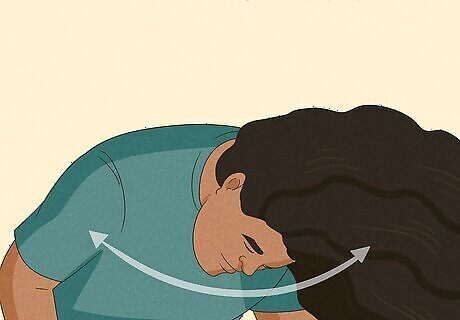
Sway your head from side to side. When you get tired of moving your head back and forth, switch to side to side. Rock one way in a downward arc, then go in the other direction. For added flare, try to make a figure eight with the top of your head. Swing with your whole body and bring your chin down in more of a V shape than a U shape. Your cervical vertebrae aren’t made to swivel, so rolling your neck can raise your risk of injury. Be careful not to jerk your head too hard in either direction. This is a good way to pull something. Once again, trying to keep your headbang at a 45º angle can help prevent injury.
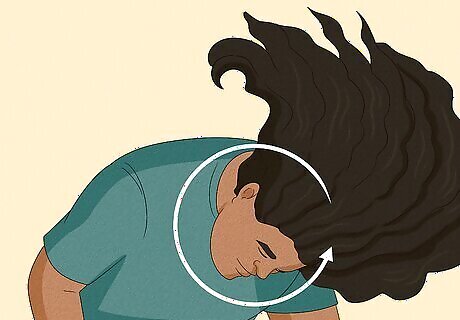
Try the windmill for added flair. If you have a head full of flowing locks (is there anything more metal?), wait for the next big breakdown to whip it in a wide circle and let it fly. Move your shoulders and upper body along with your head to reduce how much you need to swivel your neck. Finish off your windmill with a quick head shake to reorient yourself before returning to a normal back-and-forth motion. Windmilling should be used somewhat sparingly to break up regular headbanging. Pulling it out too often can hurt your neck (and make you look more like a go-go dancer than a grindcore devotee).
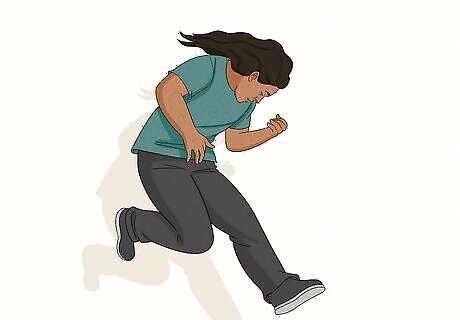
Add some movement. Standing in one place throughout the entire show is no fun. Try pacing back and forth, stomping in circles, or jumping up and down to the beat so the rest of your body can go as crazy as your head. If you're feeling spunky, hop into the mosh pit in front of the stage and let the dark power of metal flow through you. Watch out for flying fists, elbows, and other body parts in the pit. Things can get pretty hairy in there!
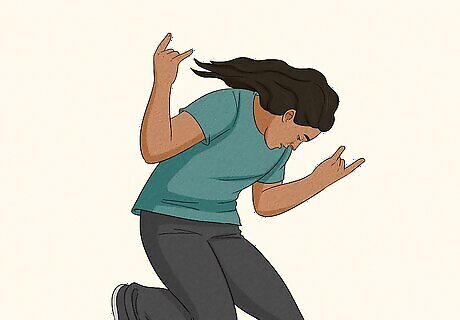
Add your arms into the mix. Hold your fist up into the air, then bring it down on your thigh. Match your headbanging to the beat of your fist to look like a hardcore god. Throw up the metal horns by sticking your index and little fingers straight out and tucking your middle and ring fingers under your thumb. Horns are often used to celebrate after a face-melting solo or signal appreciation to the band between songs.
Pre-Headbanging Stretches & Exercises
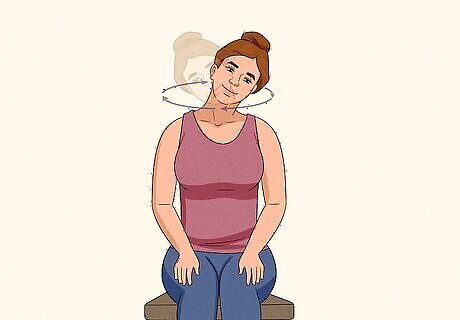
Neck rotation Sit down and look straight forward. Slowly turn your head to one side until you feel a stretch from the side of your neck to your shoulder. Hold the stretch for 3 seconds, then slowly turn to the other side. Do ten on each side. For a more intense stretch, cup your hand on the back of your neck and lean your head back, then turn your head. Treat headbanging as a skill that takes work to do safely. If you prepare and practice your headbanging, you can help prevent injuring yourself at a show.
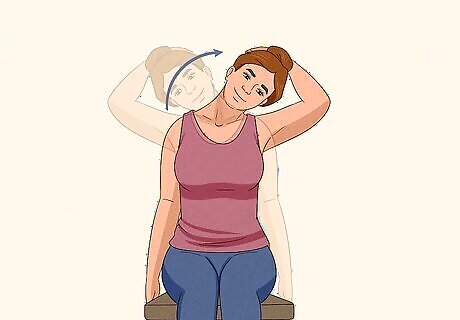
Side of neck stretch Look straight ahead and slowly bring your ear down towards your shoulder. Keep your shoulder still—don’t raise it to your ear. Hold the stretch for 15 seconds, then move to the other side. Do it five times on each side.
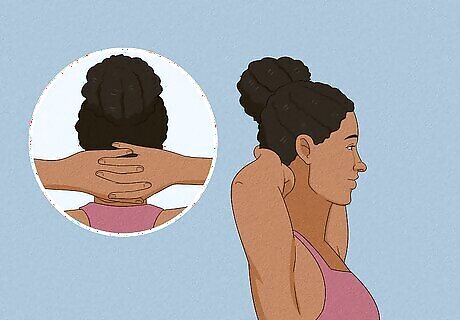
Head resistance Lace your fingers and put them behind your head. Press your hands against your head without letting them move your head forward, then slowly let your hands press your chin to your chest. Repeat on all sides by pressing your hand against your forehead, then either side of your head. Strengthening your neck helps reduce your risk of getting a concussion. Taking a run before the show can also help warm you up for a serious headbanging session.
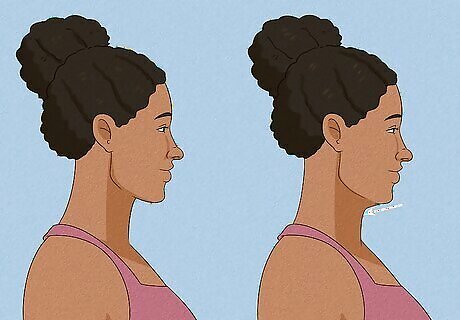
Chin tuck Sit and hold your head in a neutral position. Slowly bring your chin back without tilting or nodding your head. Once your chin is tucked back as far as it can go, hold the stretch for 5 seconds. Move your head back to the starting position, then repeat ten times.
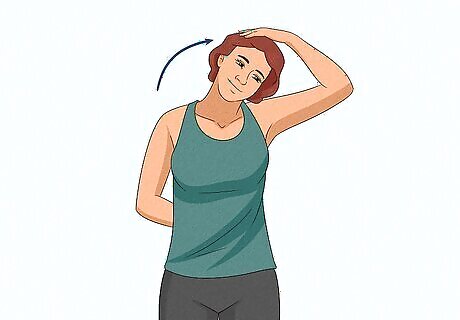
Trapezius stretch Stand up straight and place your left hand on your lower/middle back. Reach your right hand over and place it on the left side of your head. Look straight ahead and pull your neck to your shoulder until you feel a stretch. Hold it for 30 seconds, then repeat on the other side.
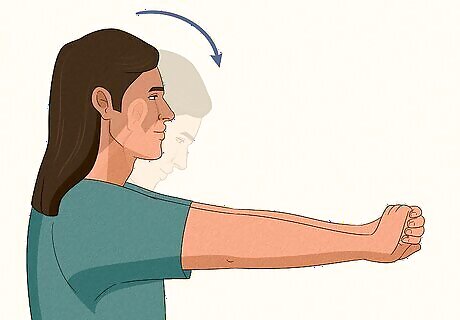
Lower neck (rhomboid) stretch Stand up with your arms straight out in front of you. Lace your fingers and slowly put your chin to your chest. Press into your hands, feeling your shoulder blades move apart. Hold the stretch for 15 seconds, then repeat four more times.




















Comments
0 comment